There can be your advertisement
300x150
Wardrobe for 60 thousand: organizing storage from scratch
The main thing is not to chase the picture from social networks, but to focus on practicality and proper planning of every centimeter
Does the wardrobe room seem like a luxury from glossy magazines? What if we tell you that a full storage system can be organized for the price of a decent sofa? 60 thousand rubles — a real amount to create a functional wardrobe that will solve storage problems once and for all. The main thing is not to chase the picture from social networks, but to focus on practicality and proper planning of every centimeter.
The key points from the article:
- A wardrobe can be organized even in 2 sq. m — the layout is important, not the area;
- Frame systems are 2-3 times cheaper than custom furniture with the same functionality;
- Proper zoning by types of clothing increases capacity by 30-40%;
- Lighting and ventilation are critically important for preserving items;
- Modular systems allow changing the configuration as needed.
Layout: every centimeter must work
A wardrobe is not just a large closet, but a well-thought-out storage system.
- Start with inventory: count how much long clothing (coats, dresses), short (shirts, jackets), shoes, and accessories you have.
- Minimum dimensions for a comfortable wardrobe: width 1.2 m, length 1.5 m. Such space fits a storage system on three walls plus room for dressing. The ideal shelf depth is 60 cm, minimum 40 cm.
- Vertical zoning saves space. Bottom — shoes and heavy items, at eye level — everyday clothes, top — seasonal items and rarely used things.
- Corner solutions use 'dead' zones. Corner bars, rotating mechanisms, sliding baskets in corners — every centimeter should bring value.
Frame systems: maximum functionality for reasonable money
Forget about custom furniture — it's expensive and unnecessary. Frame systems offer the same functionality for a third of the price.
- Metal frames last decades and withstand any load. Russian manufacturers offer quality systems at affordable prices. A basic set for a 2×1.5 m wardrobe — 25-35 thousand rubles.
- Modularity is the main advantage of frame systems. Need more space for shoes? Add shelves. Bought a long coat? Raise the bar higher. Such changes are impossible with custom furniture.
- Installing frame systems is simpler than it seems. Most manufacturers provide detailed instructions and video tutorials. You can do it yourself over the weekend if you wish.
Storage systems: from hangers to organizers
- Hangers for clothing — the foundation of a wardrobe. But not all hangers are equal. Two-level hangers double capacity — top for shirts, bottom for pants.
- Sliding baskets are more convenient than shelves for underwear, knitwear, and accessories. Mesh baskets ensure ventilation, solid ones — dust protection.
- Shoe shelves should be slanted — this makes shoes easier to see and take up less space. Special shoe organizers save up to 50% of space compared to regular shelves.
- Sliding hangers for ties, belts, and accessories — not a luxury but practicality. When accessories are visible, they're used more often and combined more boldly.
- Drawers with dividers are perfect for underwear, socks, and small accessories. Chaos in a drawer = lost time searching for the right item.
Lighting: seeing every detail
Poor lighting turns the wardrobe into a warehouse. Bright, even light that doesn't distort colors is needed.
- LED panels or spotlights — the optimal solution. They don't heat up, save electricity, and provide quality light. 4-6 lighting points for a 3-4 sq. m wardrobe.
- Under-shelf LED strips — not a luxury but necessity. LED tape under shelves lights up clothes on hangers, helping quickly find the right item.
- A mirror with backlight — an essential element. Better a large full-length mirror with lamps around the edges. This way, you see how your outfit looks completely.
- A motion sensor switch — convenient when hands are full. Enter the wardrobe and light turns on automatically.
Design: Ekaterina Kulikova
Ventilation: preserving items in perfect condition
Stagnant air is the enemy of clothing. Without proper ventilation, a musty smell develops and moths or mold can appear.
- Forward ventilation is mandatory for wardrobes without windows. A small exhaust fan with 50-70 cu. m/h capacity will do the job. Installation cost — 8-12 thousand rubles.
- Ventilation grilles in doors ensure natural air exchange. Two grilles — one at the bottom and one at the top of the door — create air convection.
- Moisture absorbers or dehumidifiers are useful in humid climates. Especially relevant for first-floor apartments and houses with poor ventilation.
- Wardrobe doors should 'breathe'. Solid doors without ventilation holes create a greenhouse effect.
Doors: sliding, hinged or without doors?
- Sliding doors save space in small rooms. But they are more expensive than hinged ones and may jam over time. Good guides cost 8-10 thousand rubles per set.
- Hinged doors are cheaper and more reliable, but require space to open. In a small bedroom, this may be critical.
- A wardrobe without doors is the most budget-friendly option. A curtain or decorative screen costs a few rubles, but appearance suffers. Maximum ventilation is ensured though.
- Mirror doors visually increase the bedroom space. Especially relevant for small rooms where every square meter counts.
Design: Ekaterina Lyubimkina
Equipment: accessories that change everything
- Hangers of the same type create visual order and save space. Velvet hangers prevent clothes from sliding, thin metal ones save space.
- Underwear organizers transform drawers into a system. Instead of chaos — clear cells for each type of underwear. A set of organizers costs 2-3 thousand rubles.
- Clothing covers protect from dust and moths. Especially important for expensive suits and rarely worn items.
- Wall hooks and brackets increase storage space. Bags, belts, scarves — everything should have its place.
- Dirty laundry baskets are not a luxury but hygiene. Dirty clothes should not be next to clean ones.
Saving without compromising functionality
- Building supply stores and online shops are sources of budget, but quality organizers. Not everything has to be designer — functionality is key.
- DIY solutions can be just as good. Wooden boxes from a building store, covered with fabric, look stylish and cost next to nothing.
- Gradual filling allows spreading expenses over time. Start with the basic system, then add accessories and improvements.
- Used furniture sometimes provides great opportunities. An old dresser can be reworked into a wardrobe island, spending only on paint and hardware.
Mistakes to avoid
- Cost-cutting on lighting is a false economy. A poorly lit wardrobe becomes a warehouse where nothing can be found.
- Too high shelves are inconvenient to use. Everything above 2 meters should be for seasonal storage.
- Underestimating the need to store shoes — a common mistake. Shoes take up more space than you think. Plan 20-25% of the space for shoes.
- Ignoring ventilation leads to smell and clothing preservation issues. It's better to spend an extra 10 thousand rubles on ventilation than replace ruined clothes later.
A wardrobe for 60 thousand — a reality with the right approach. The main thing is to focus on functionality, not external appearance. Beautiful social media photos can be made later, but convenience is laid down during planning. Invest in a system that will serve for years and simplify your life every day.
Cover: Design project by Ekaterina Kulikova
More articles:
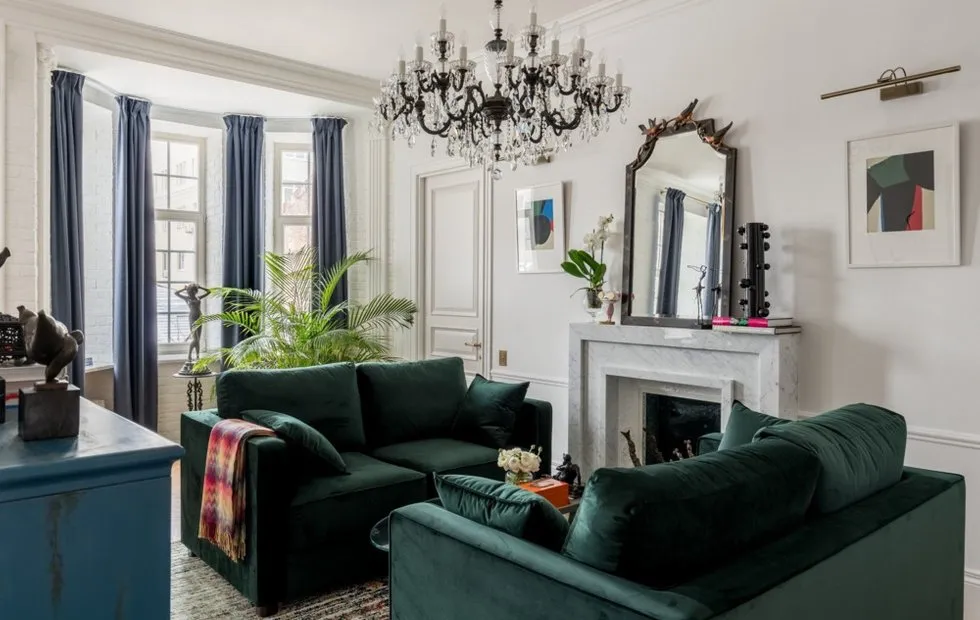 Vintage and Modern: How to Combine Old and New in Interior Design
Vintage and Modern: How to Combine Old and New in Interior Design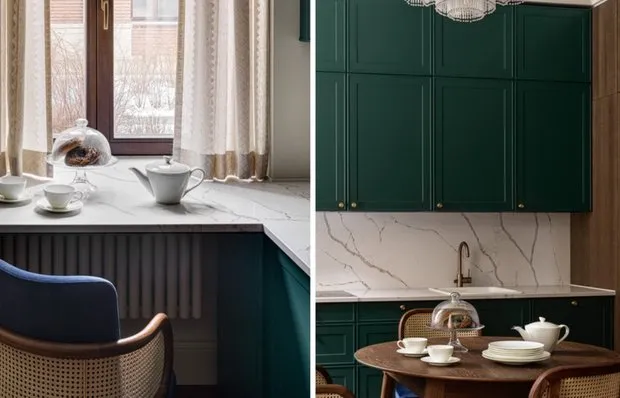 How We Designed an Emerald Kitchen in an Apartment Inspired by Oblomov's Image
How We Designed an Emerald Kitchen in an Apartment Inspired by Oblomov's Image 7 Ideas from a Townhouse in the Spirit of Oblomov That You Can Replicate in Your Interior
7 Ideas from a Townhouse in the Spirit of Oblomov That You Can Replicate in Your Interior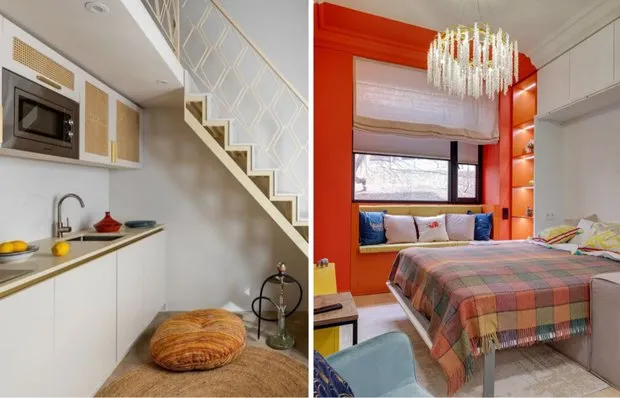 How to Maximize Small Spaces: 5 Mini Studios Up to 25 m²
How to Maximize Small Spaces: 5 Mini Studios Up to 25 m²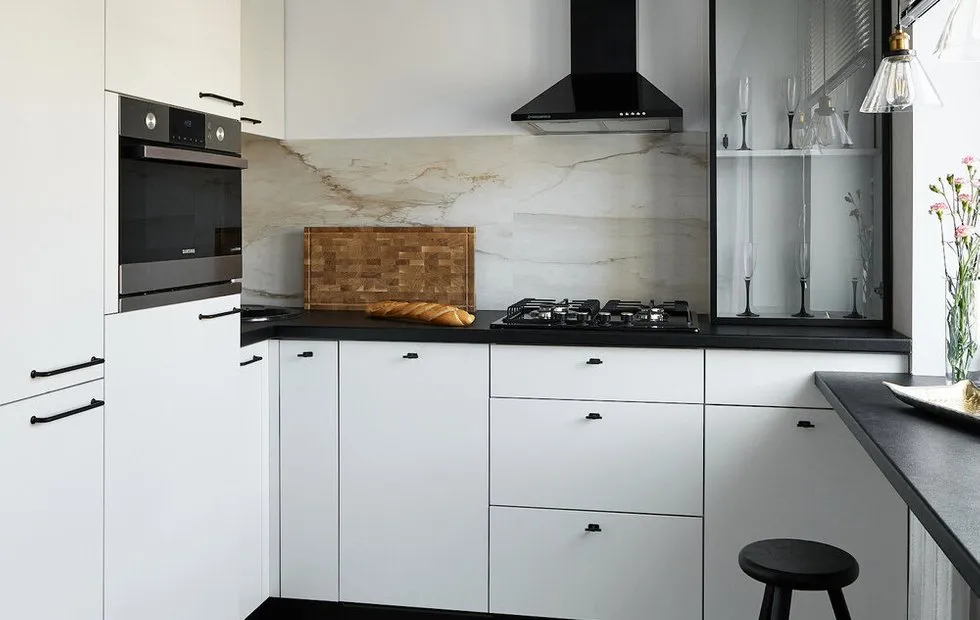 Kitchen 5 sq.m: What to Remove, Add, and Where to Find Space for Everything
Kitchen 5 sq.m: What to Remove, Add, and Where to Find Space for Everything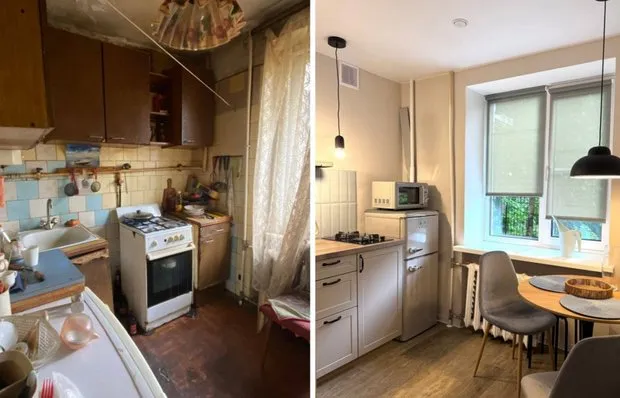 Before and After: Transformed a Fearful Khrushchyovka into a Cozy 2-Room Apartment for 1.5 Million Rubles
Before and After: Transformed a Fearful Khrushchyovka into a Cozy 2-Room Apartment for 1.5 Million Rubles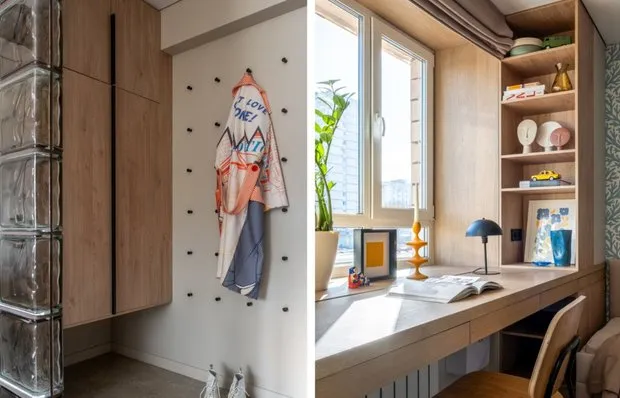 How to Store Things in a Studio Apartment: 7 Great Ideas
How to Store Things in a Studio Apartment: 7 Great Ideas How to Quickly Update Interior: 10 Trendy Finds
How to Quickly Update Interior: 10 Trendy Finds